Abstract
Pecking was reinforced by a fixed-ratio schedule with food, and responses during a red light produced a time out. If the bird did not respond during the red light, the light terminated and the bird could complete the FR schedule of positive reinforcement uninterrupted. The bird stopped responding during the red light sufficiently to avoid most of the possible time outs. In general, the pre–time-out stimulus suppressed responding more when the FR schedule was large than when it was small. The occurrence of the pre–time-out stimulus in the fixed ratio produced FR strain and extreme curvature atypical of normal fixed ratios of this size. Amobarbital, pentobarbital, chlorpromazine, and d-amphetamine injected when the FR performance was strained by the pre–time-out procedure produced marked increases in responding. The drug administration lowered the rate of responding only at larger doses; and then this occurred predominantly just after the injection.
Full text
PDF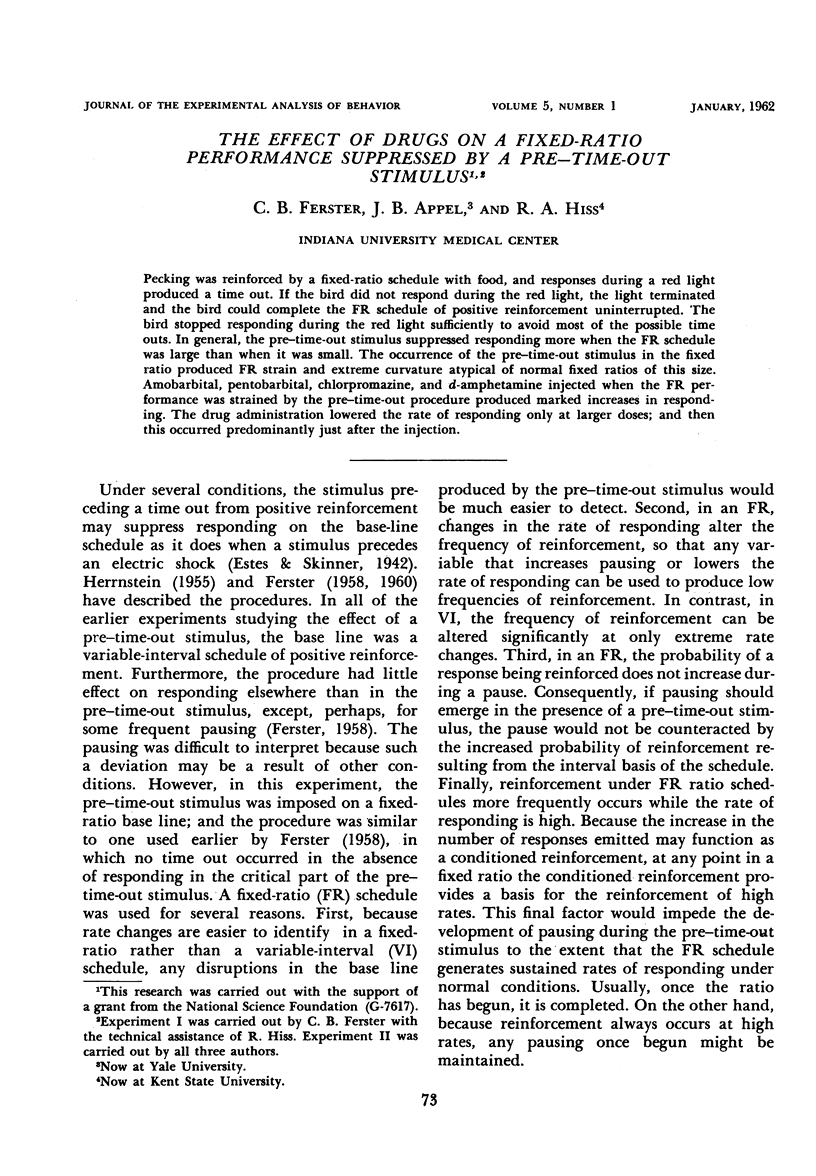
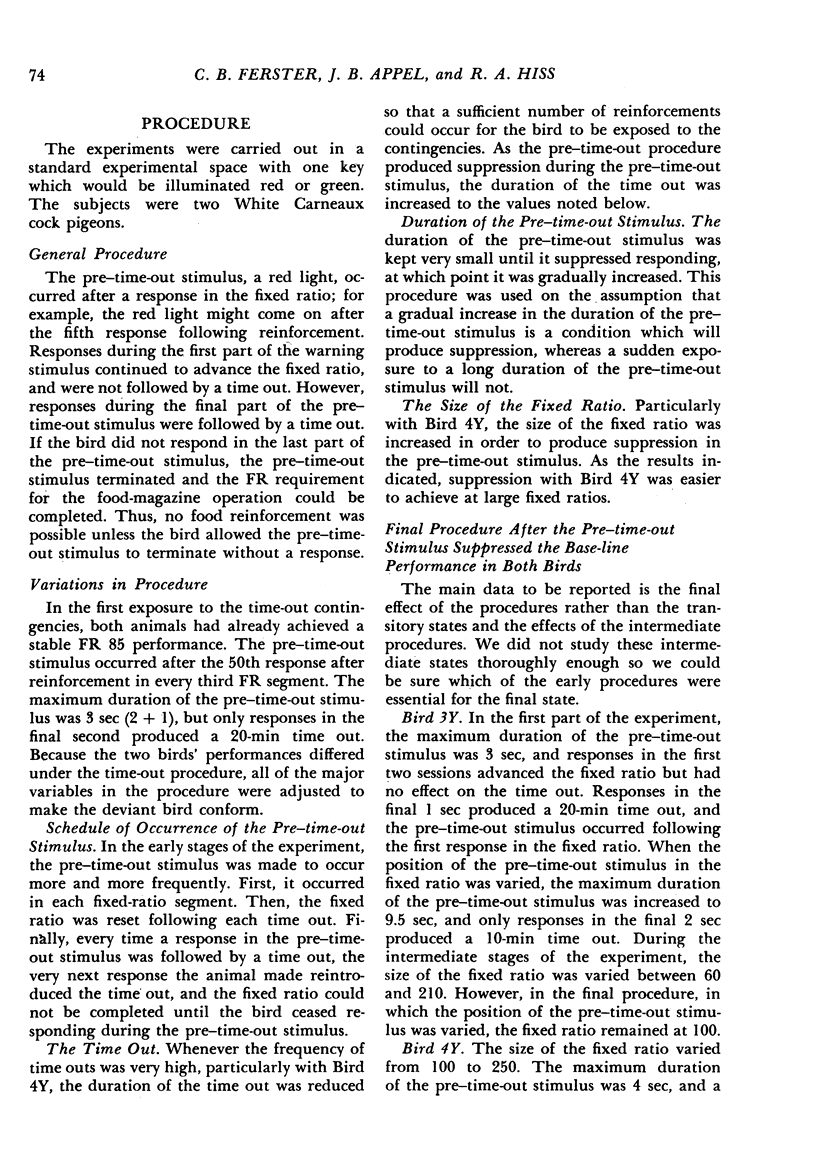
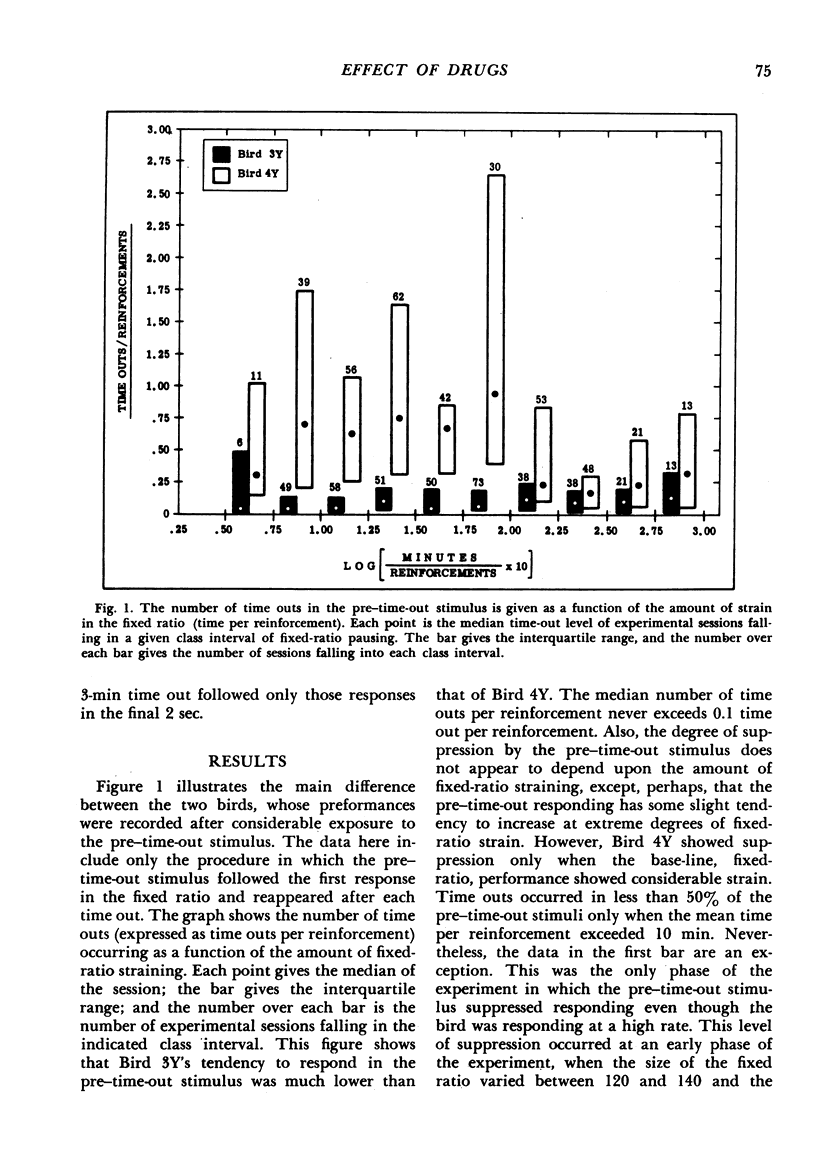
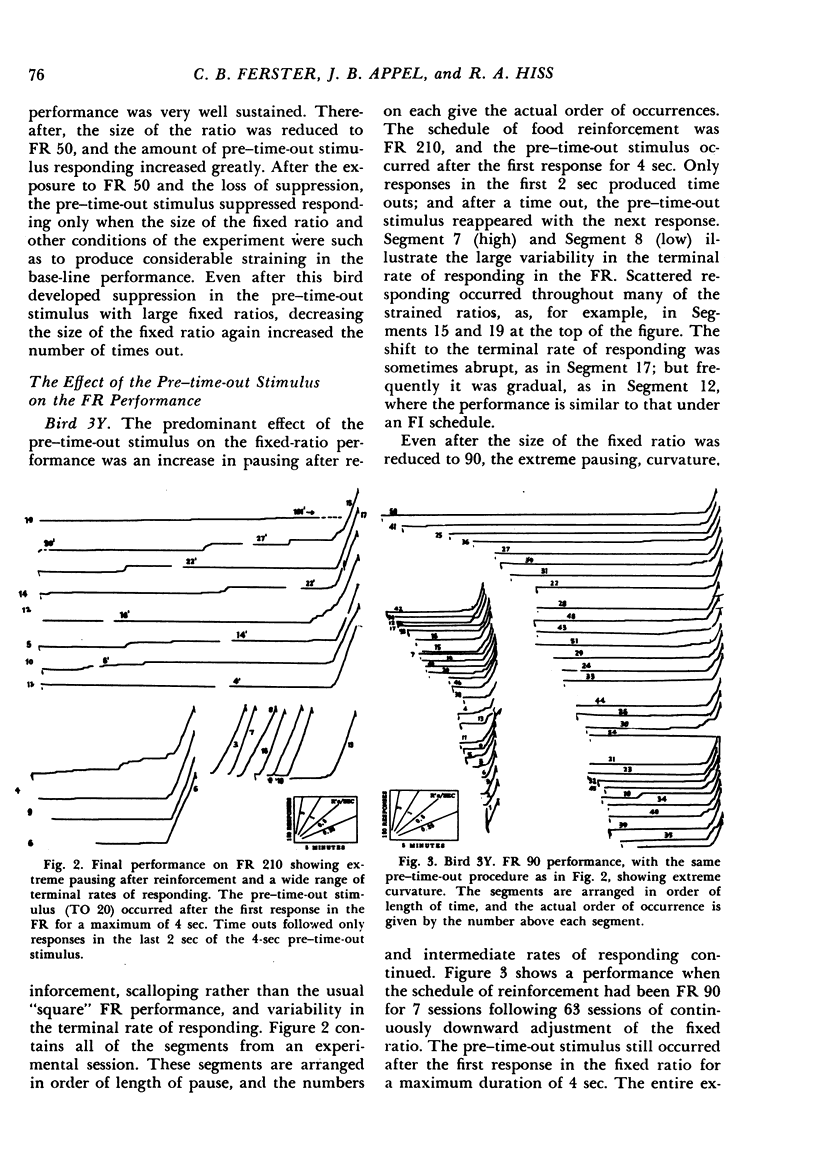
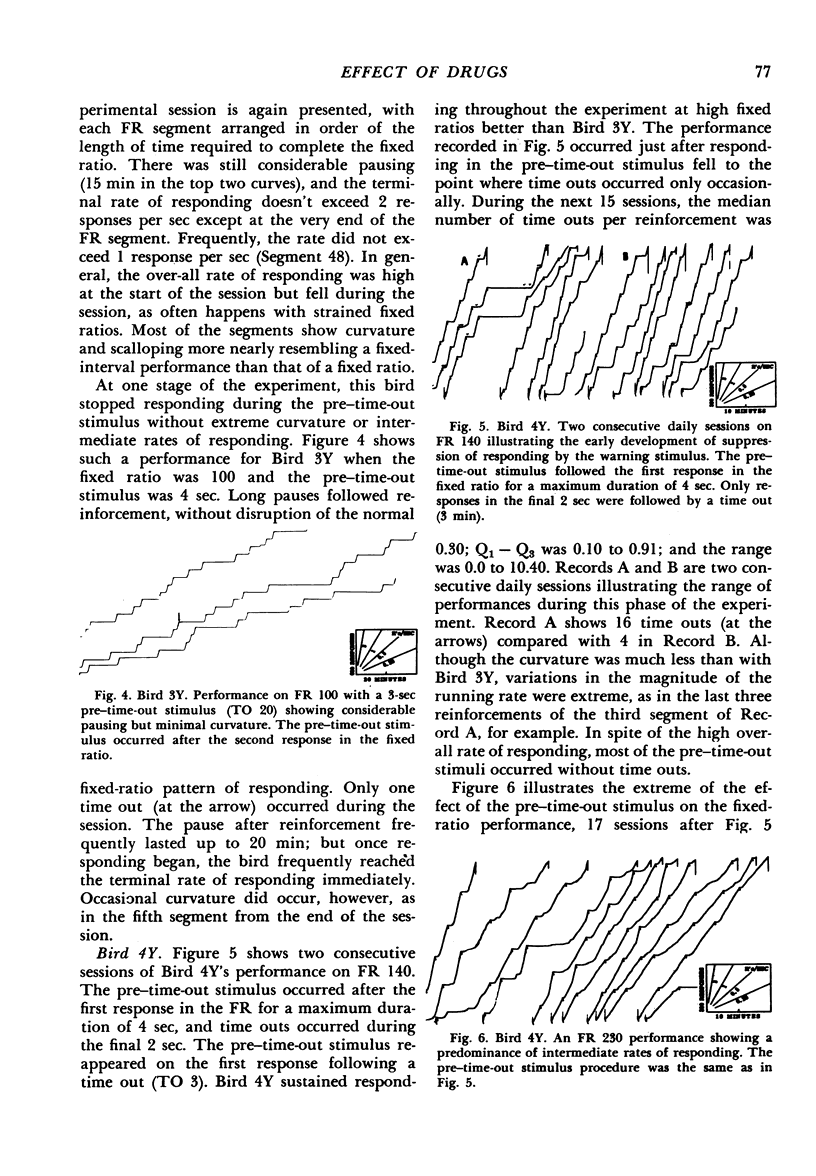
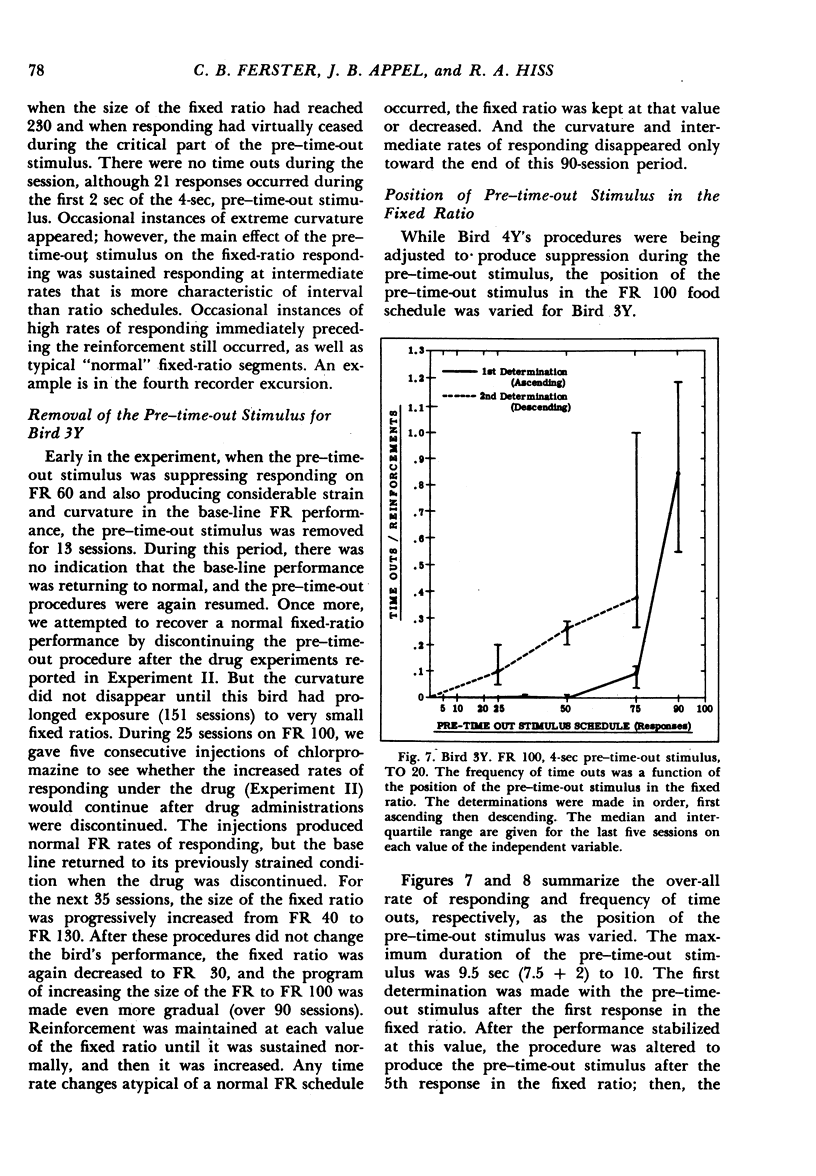
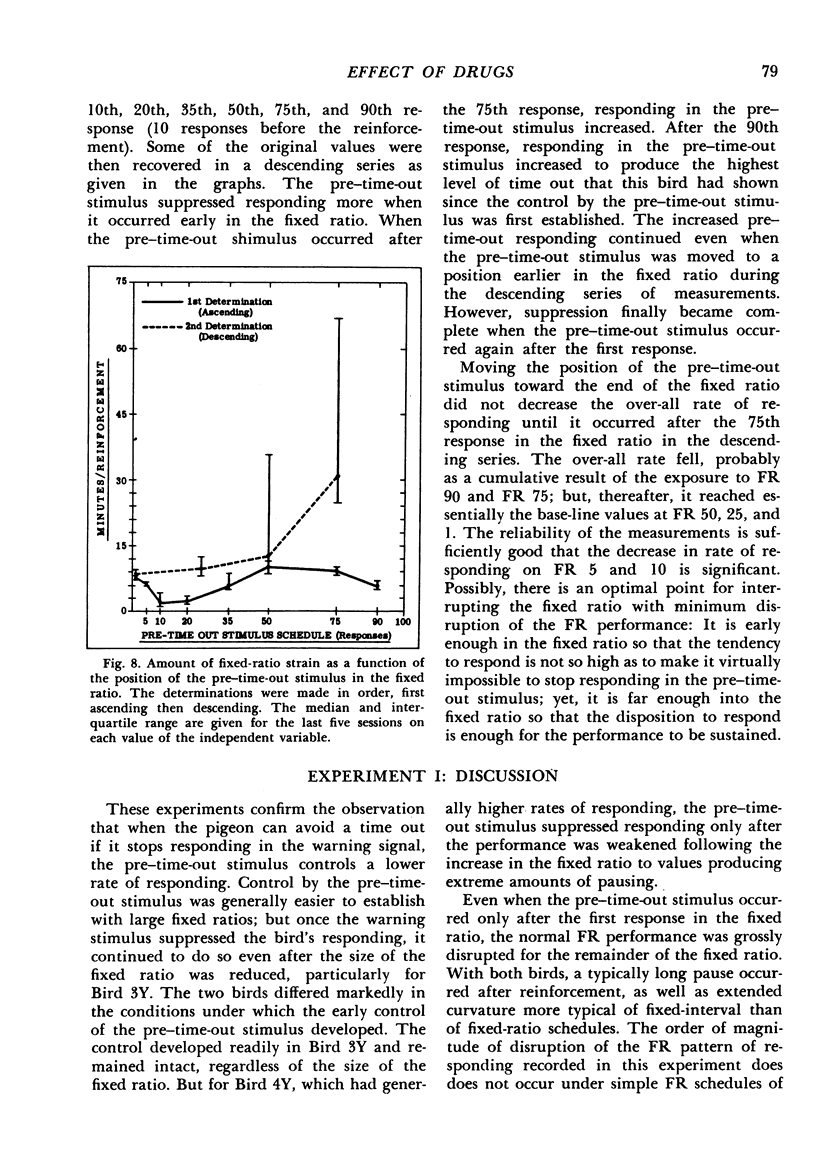
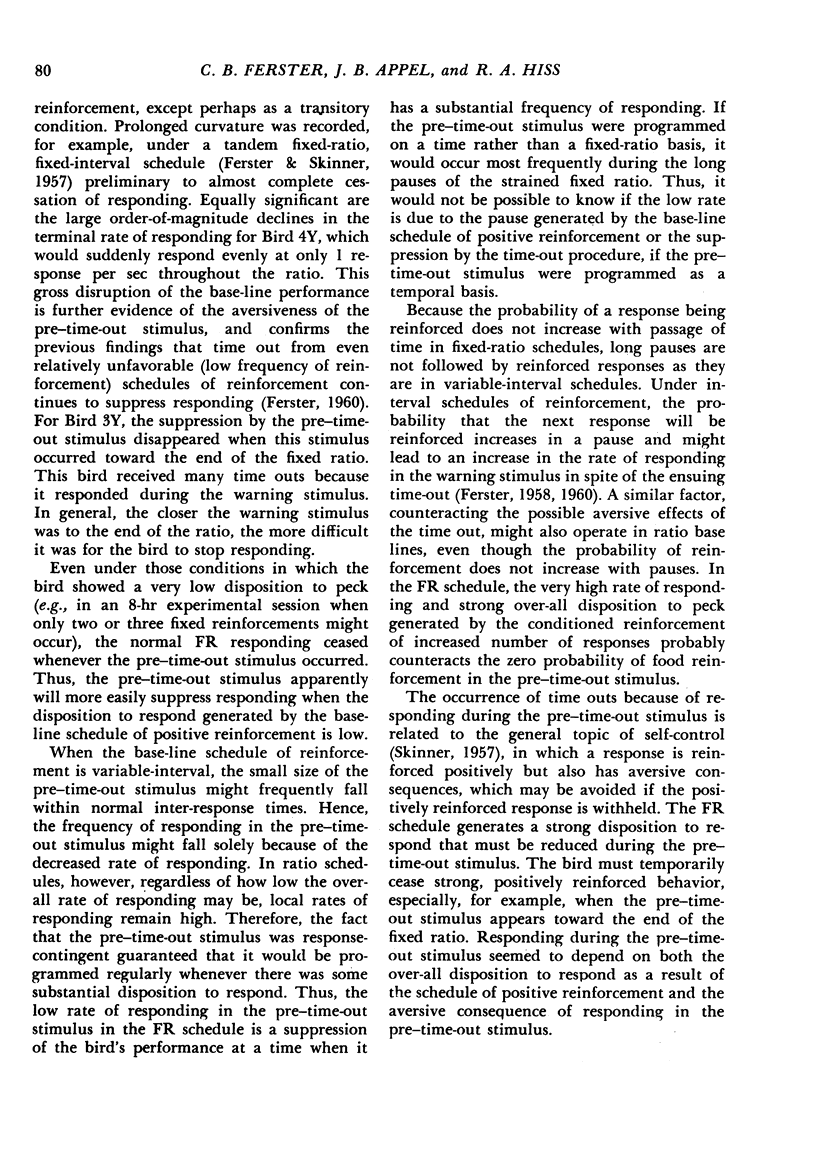
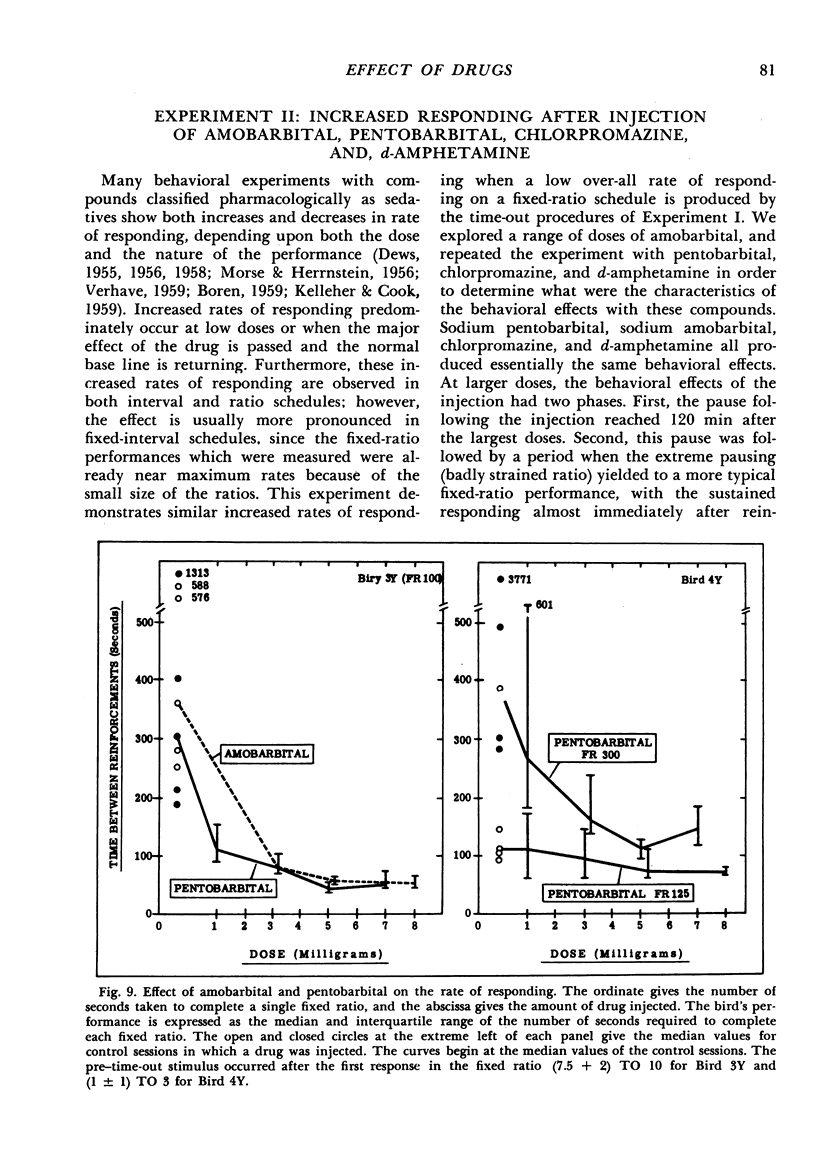
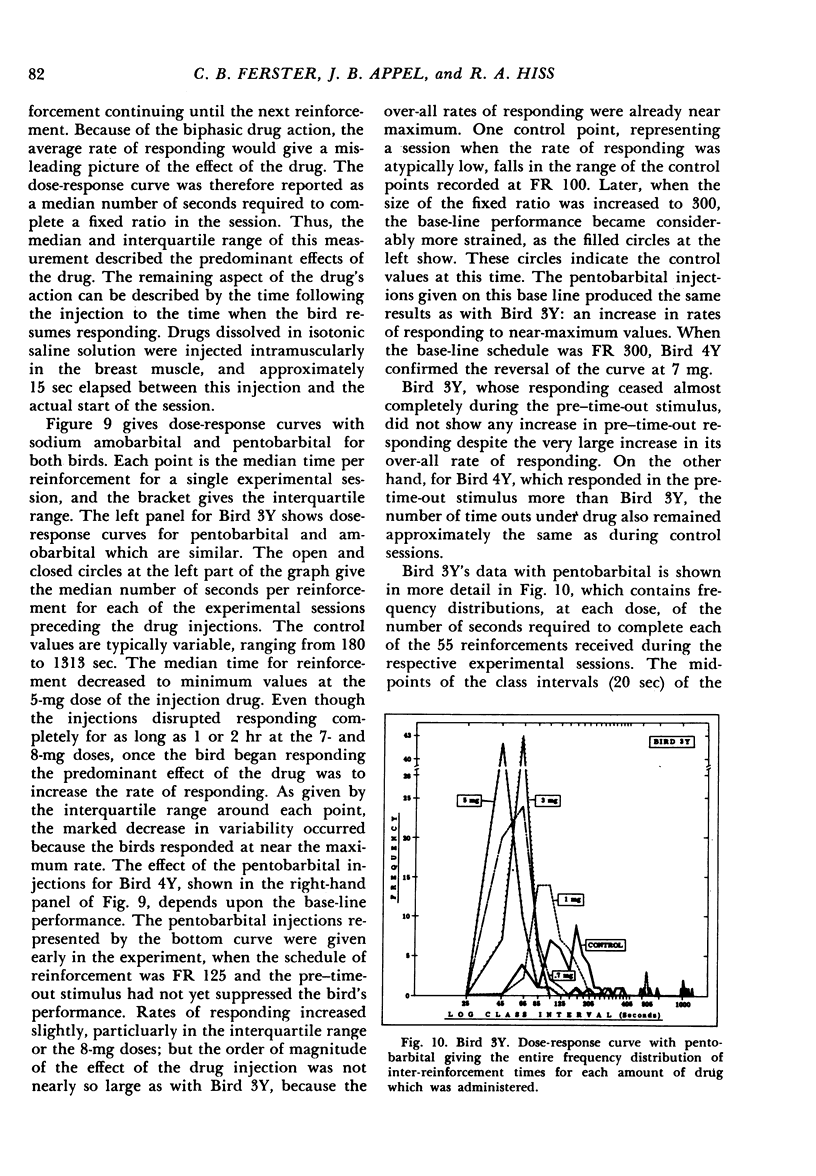
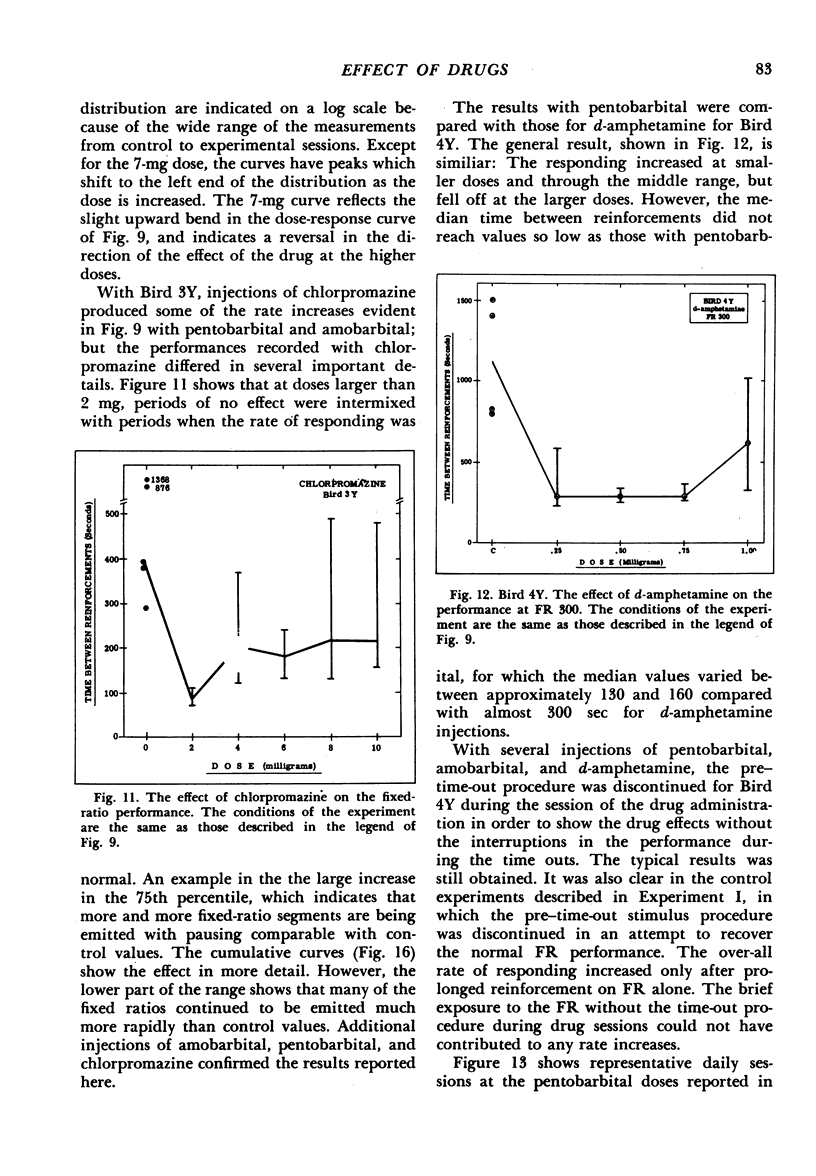
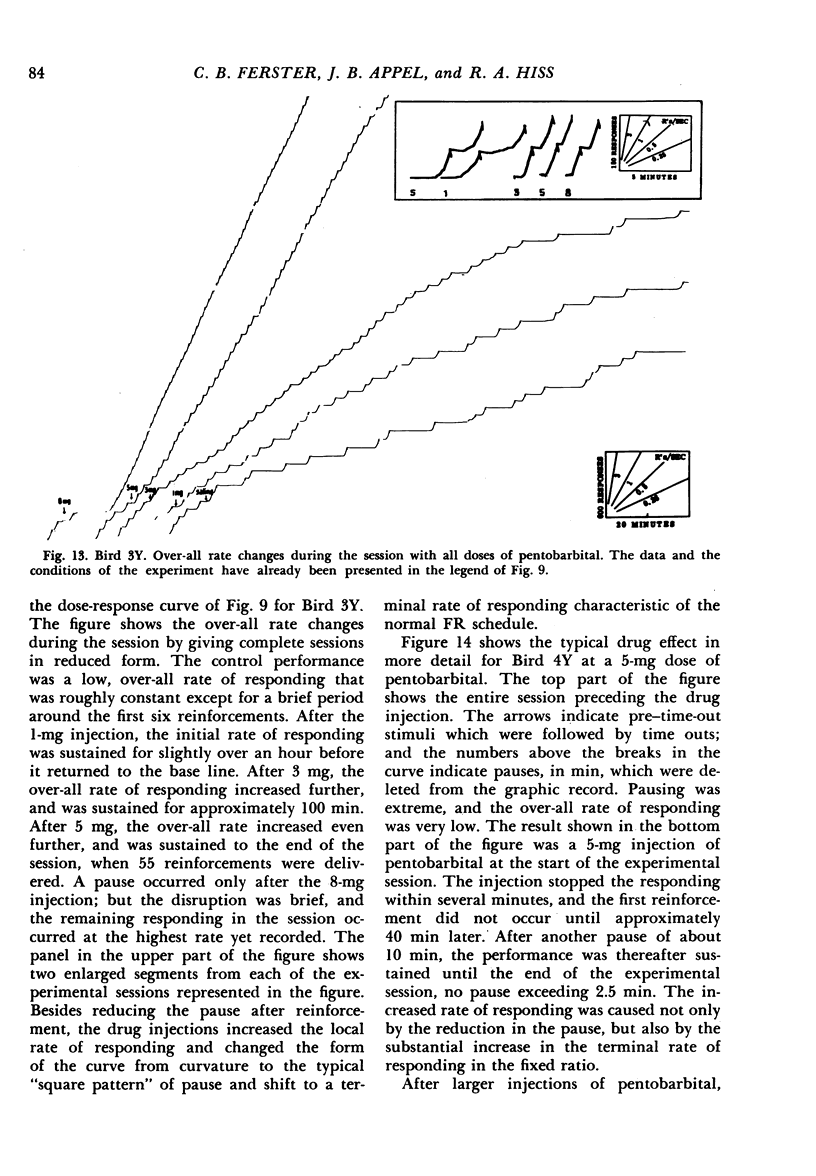
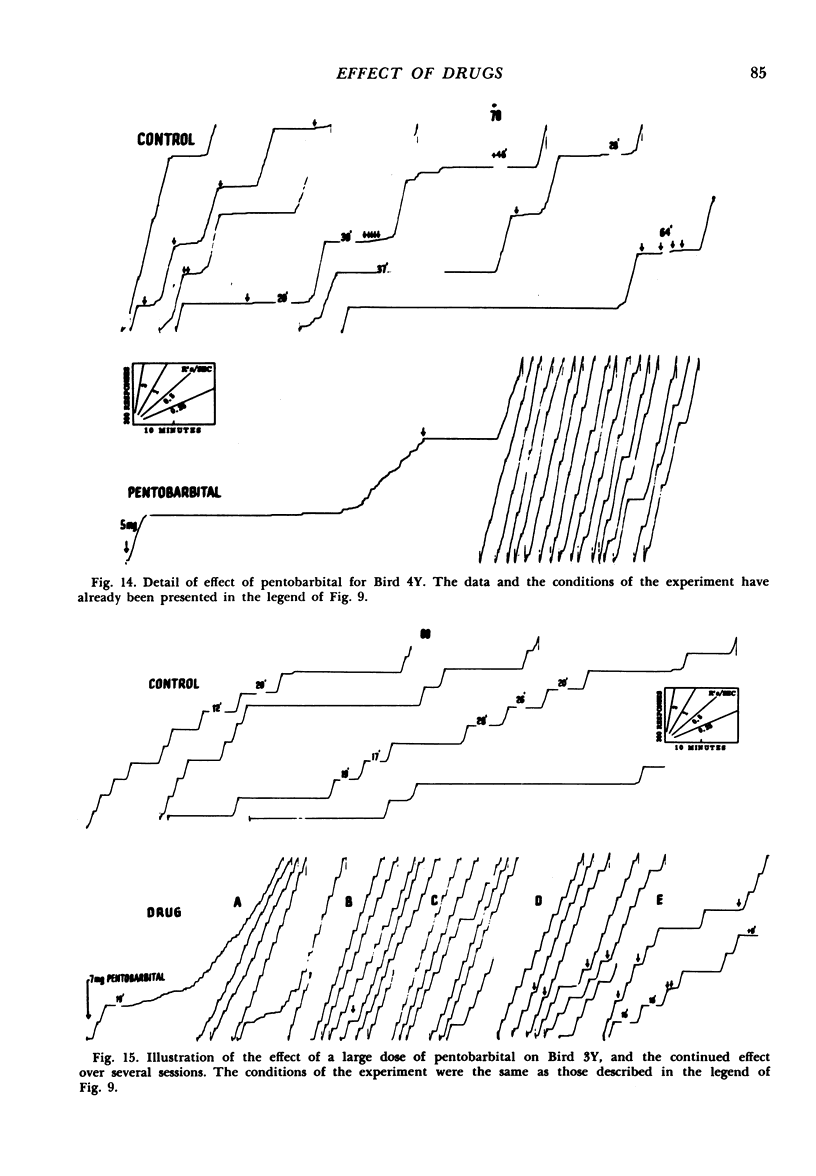
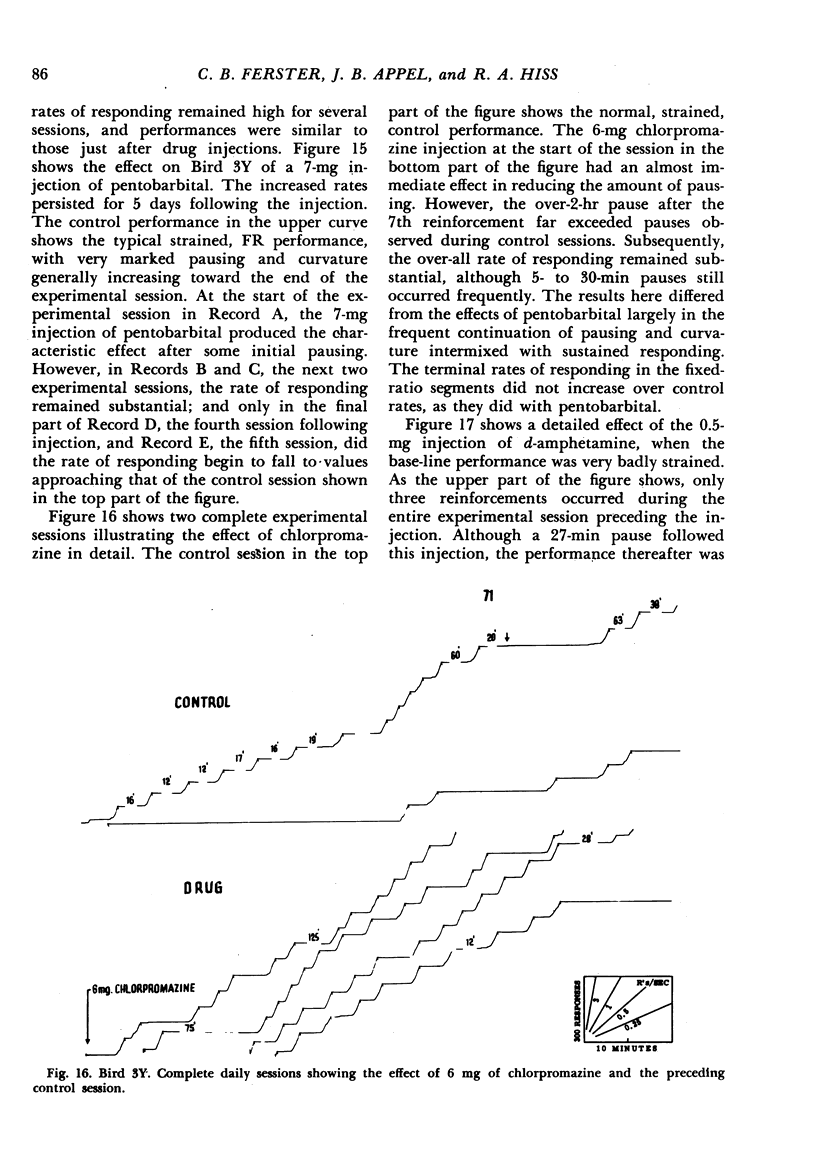
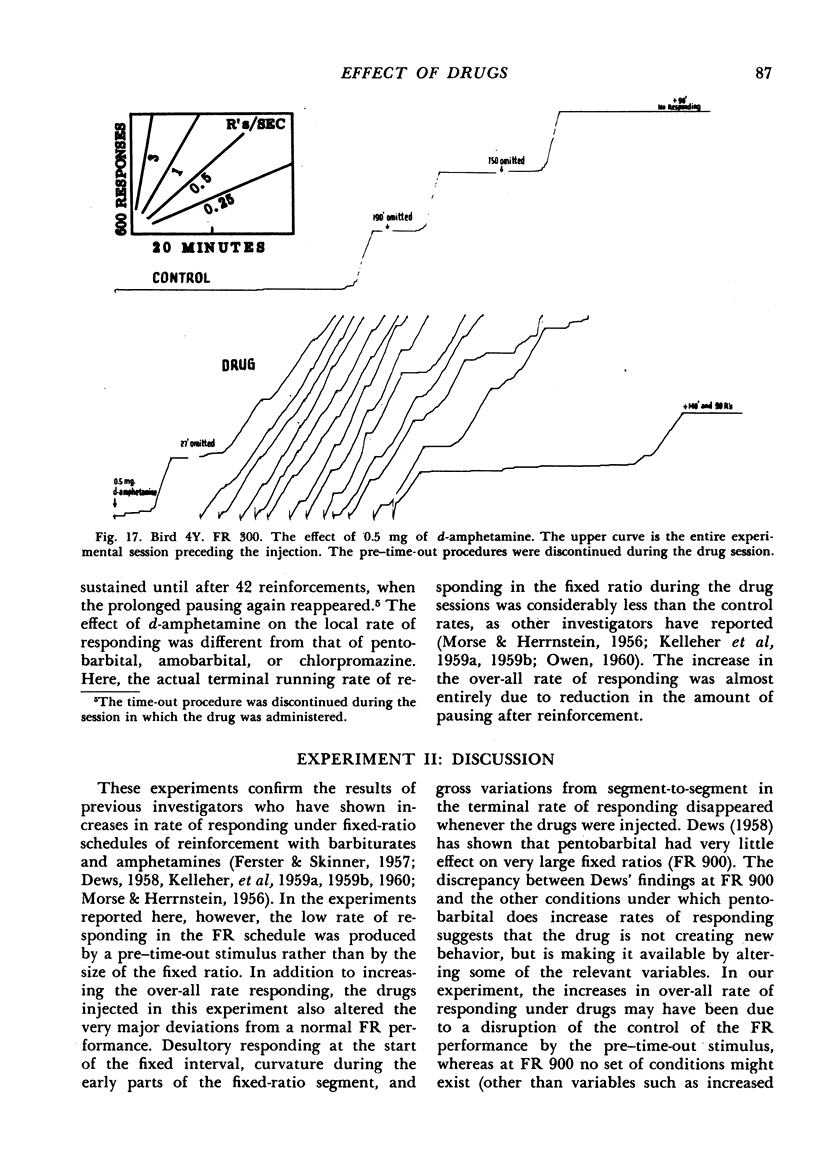
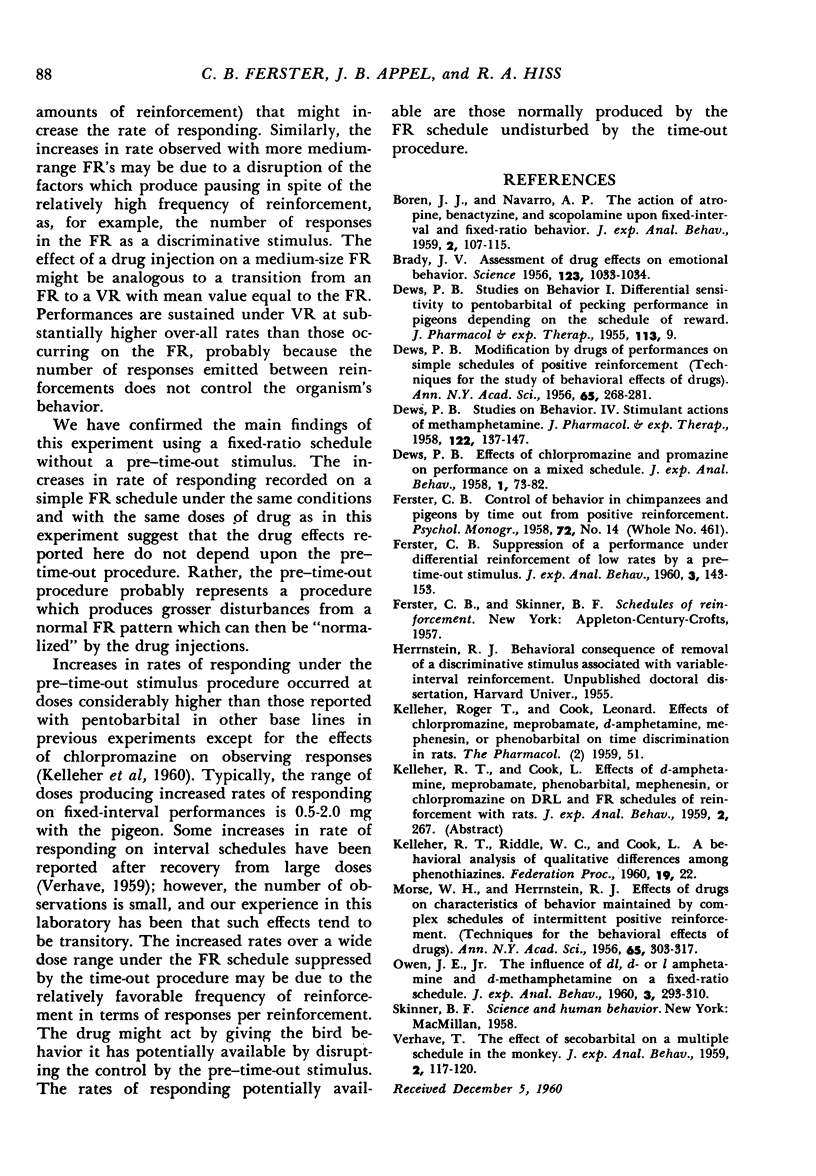
Selected References
These references are in PubMed. This may not be the complete list of references from this article.
- BOREN J. J., NAVARRO A. P. The action of atropine, benactyzine, and scopolamine upon fixed-interval and fixed-ratio behavior. J Exp Anal Behav. 1959 Apr;2:107–115. doi: 10.1901/jeab.1959.2-107. [DOI] [PMC free article] [PubMed] [Google Scholar]
- BRADY J. V. Assessment of drug effects on emotional behavior. Science. 1956 Jun 8;123(3206):1033–1034. doi: 10.1126/science.123.3206.1033. [DOI] [PubMed] [Google Scholar]
- DEWS P. B. Effects of chlorpromazine and promazine on performance on a mixed schedule of reinforcement. J Exp Anal Behav. 1958 Jan;1:73–82. doi: 10.1901/jeab.1958.1-73. [DOI] [PMC free article] [PubMed] [Google Scholar]
- DEWS P. B. Modification by drugs of performance on simple schedules of positive reinforcement. Ann N Y Acad Sci. 1956 Nov 2;65(4):268–281. doi: 10.1111/j.1749-6632.1956.tb49639.x. [DOI] [PubMed] [Google Scholar]
- DEWS P. B. Studies on behavior. IV. Stimulant actions of methamphetamine. J Pharmacol Exp Ther. 1958 Jan;122(1):137–147. [PubMed] [Google Scholar]
- FERSTER C. B. Suppression of a performance under differential reinforcement of low rates by a pre-time-out stimulus. J Exp Anal Behav. 1960 Apr;3:143–153. doi: 10.1901/jeab.1960.3-143. [DOI] [PMC free article] [PubMed] [Google Scholar]
- HERRNSTEIN R. J., MORSE W. H. Effects of drugs on characteristics of behavior maintained by complex schedules of intermittent positive reinforcement. Ann N Y Acad Sci. 1956 Nov 2;65(4):303–317. doi: 10.1111/j.1749-6632.1956.tb49641.x. [DOI] [PubMed] [Google Scholar]
- OWEN J. E., Jr The influence of dl-, d-, and l-amphetamine and d-methamphetamine on a fixed-ratio schedule. J Exp Anal Behav. 1960 Oct;3:293–310. doi: 10.1901/jeab.1960.3-293. [DOI] [PMC free article] [PubMed] [Google Scholar]
- VERHAVE T. The effect of secobarbital on a multiple schedule in the monkey. J Exp Anal Behav. 1959 Apr;2:117–120. doi: 10.1901/jeab.1959.2-117. [DOI] [PMC free article] [PubMed] [Google Scholar]


